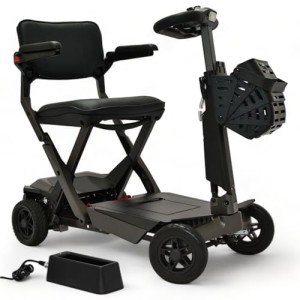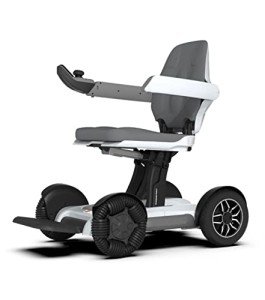mobility_scooter8079
About mobility_scooter8079
Guide To Mobility Scooters UK: The Intermediate Guide The Steps To Mobility Scooters UK
Navigating the World of Mobility Scooters in the UK
Mobility scooters have ended up being an important tool for many in the United Kingdom, using a practical and dignified option for individuals with mobility problems. These scooters not just enhance the lifestyle for their users but likewise offer a sense of independence and freedom. This comprehensive guide aims to supply a summary of mobility scooters in the UK, including their benefits, types, purchasing considerations, and maintenance suggestions.

Intro to Mobility Scooters
A mobility scooter is a battery-powered vehicle developed to assist people with walking troubles or limited mobility to move more quickly. Unlike manual wheelchairs, which need significant physical effort, mobility scooters are easy to operate and can be utilized both indoors and outdoors. They are especially beneficial for older grownups and individuals with specials needs, permitting them to take a trip longer ranges and browse various terrains with ease.
Advantages of Mobility Scooters
-
Self-reliance and Freedom
- Mobility scooters empower users to take a trip independently, reducing the requirement for support from others.
- They can be utilized for daily activities such as shopping, going to good friends, or attending social events.
-
Economical
- While there are preliminary costs, mobility scooters can be a cost-effective alternative to other mobility aids, particularly over time.
- Numerous designs are readily available for rent or lease, offering versatility for users with differing needs.
-
Convenience and Safety
- Scooters are developed with ergonomic seats and adjustable features to guarantee comfort throughout long durations of usage.
- Safety functions such as lights, horns, and braking systems boost user self-confidence and security.
-
Social Inclusion
- By allowing individuals to take part in community activities, mobility scooters promote social addition and lower feelings of seclusion.
-
Health Benefits
- Regular usage of a mobility scooter can help maintain physical health by encouraging users to stay active and engaged.
Types of Mobility Scooters
Mobility scooters in the UK come in various types, each created to accommodate various requirements and preferences:
-
Class 2 Scooters (Pavement Scooters)

- Speed: Up to 4 mph
- Use: Designed for usage on pavements and within indoor spaces
- Benefits: Compact and light-weight, ideal for brief ranges and everyday errands
-
Class 3 Scooters (Road and Pavement Scooters)
- Speed: Up to 8 mph on roadways and 4 mph on pavements
- Use: Suitable for longer journeys and can be utilized on both roadways and pavements
- Benefits: More robust and efficient in handling numerous terrains, consisting of rough surfaces and inclines
-
Off-Road Scooters
- Speed: Varies, however typically higher than Class 2 and Class 3 scooters
- Usage: Designed for off-road use, consisting of parks, trails, and irregular surface areas
- Advantages: Enhanced resilience and traction, perfect for daring users
-
Travel Mobility Scooters
- Speed: Varies, but generally as much as 4 mph
- Use: Portable and easy to disassemble for transportation
- Advantages: Perfect for users who travel regularly and require a portable option
Getting Considerations
When buying a mobility scooter, numerous factors should be thought about to make sure the best suitable for the user’s requirements:
-
User’s Physical Condition
- Weight Capacity: Ensure the scooter can support the user’s weight.
- Height and Reach: Choose a model that is adjustable to fit the user’s height and reach comfortably.
-
Intended Use
- Indoor/Outdoor: Determine if the scooter will be used primarily inside, outdoors, or both.
- Terrain: Consider the type of terrain the user will navigate, consisting of any hills or rough surface areas.
-
Battery Life and Range
- Battery Type: Lithium-ion batteries are usually more efficient and longer-lasting than lead-acid batteries.
- Range: Check the scooter’s range to ensure it satisfies the user’s daily travel requirements.
-
Safety Features
- Brakes: Look for scooters with trusted braking systems.
- Lights and Horns: Essential for exposure and informing others.
-
Guarantee and Customer Support
- Warranty: Ensure the scooter comes with a thorough warranty.
- Consumer Support: Choose a trusted maker with great customer support and support.
Upkeep and Safety Tips
Proper upkeep is essential to ensure the durability and security of a mobility scooter:
-
Regular Battery Checks
- Charging: Always keep the battery charged to avoid deep discharge.
- Cleansing: Keep the battery compartment clean and free from dirt and moisture.
-
Tire Maintenance
- Inflation: Regularly check and maintain appropriate tire pressure.
- Examination: Inspect tires for wear and damage, changing them as required.
-
Clean and Lubricate
- Cleaning: Wipe down the scooter frequently to keep it devoid of dirt and gunk.
- Lubrication: Lubricate moving parts to avoid rust and make sure smooth operation.
-
Security Checks
- Brakes: Test the brakes regularly to guarantee they are operating correctly.
- Lights and Horns: Check that all safety functions are functional.
-
Follow Manufacturer Guidelines
- Handbook: Refer to the user handbook for specific upkeep guidelines.
- Service: Schedule routine service consult a qualified professional.
Often Asked Questions (FAQs)
-
Can anybody utilize a mobility scooter?
- No, just individuals with a medical requirement or disability are qualified to use a mobility scooter on public roads and pavements in the UK. Nevertheless, they can be used by anybody on personal property.
-
Do I need a license to drive a mobility scooter?
- No, a license is not needed to use a Class 2 or Class 3 mobility scooter. Nevertheless, users need to be over 14 years old and have an authentic need for the scooter due to a disability or medical condition.
-
How quick can a mobility scooter go?
- Class 2 scooters have an optimal speed of 4 mph, while Class 3 scooters can reach up to 8 mph on roadways and 4 mph on pavements.
-
Can I take a mobility scooter on public transportation?
- Some public transportation, such as trains and buses, may enable mobility scooters, but it depends upon the particular service and the size of the scooter. It’s best to contact the transportation supplier in advance.
-
What is the life expectancy of a mobility scooter?
- With correct maintenance, a mobility scooter can last a number of years, typically between 5 and 10 years.
-
Can I get monetary help to buy a mobility scooter?
- Yes, financial support might be available through the Disabled Facilities Grant (DFG), local authorities, or charitable organizations. Furthermore, some insurance providers might cover part of the expense.
Mobility scooters are an important help for people with mobility issues in the UK, using a series of take advantage of increased self-reliance to enhanced social participation. By considering the user’s requirements, the intended usage, and the scooter’s features, one can select the right model to enhance their quality of life. Regular maintenance and adherence to safety standards are vital to guarantee the scooter stays a dependable and safe mode of transportation. For those who qualify, financial assistance may be available to make the purchase more affordable. Whether for day-to-day usage or occasional outings, a mobility scooter can considerably improve the user’s ability to navigate the world with confidence and ease.
Extra Resources
- Mobility Aids UK: A comprehensive directory site of mobility help and scooters.
- NHS Choices: Information on mobility aids and monetary help.
- Disability Living Allowance (DLA): Guidance on using for financial backing for disability-related expenses.
By exploring these resources and thinking about the points outlined in this guide, individuals can make an educated choice about purchasing and utilizing a mobility scooter in the UK.
No listing found.
